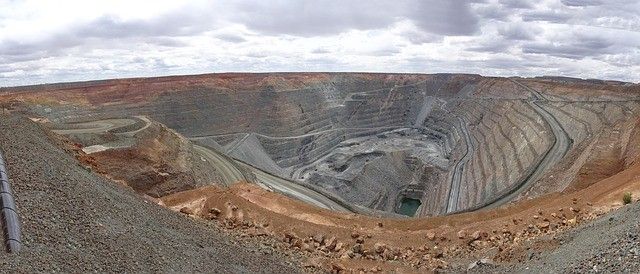
Why does the mining sector get so much attention? How much does it really contribute to our economy?
Mining booms and busts seem to define Australia’s economic story. We live with the legacies of periods of great prosperity, often brought to us by the mining industry — whether it’s on the back of gold, coal or iron ore, from the Goldrush to the most recent iron ore boom.
It’s an industry we hear a lot about, just as part of our daily lives, in ways that people living elsewhere in the world do not. If you live in the United Kingdom, for example, you don’t hear commodity prices on the evening news.
But just how great is the mining industry’s contribution to Australia? Is mining really as important as we think and as the constant coverage of its successes and failures would have us believe?
Let’s take a close look at the Australian mining industry in numbers.
$118.3 billion
According to the most recent data available from the Australian Bureau of Statistics, the mining industry was worth $118.3 billion in 2014-15. In fairness, those were not great years — with the industry having contracted by $9.4 billion on the year before, as commodity prices crashed.
$204 billion
A couple of years later, the Department of Industry expects (reported by the Australian, read with subscription) total resources exports (including mining, oil and gas) to be worth $204 billion in 2017.
$265 billion in foreign investment
Up to 2014 the level of foreign direct investment in Australian mining (and related activities) was $265 billion. That represented 38 per cent of all foreign direct investment in Australia. In 2013–14 the Foreign Investment Review Board approved more than $22 billion in proposed investments in mineral exploration and development.
14% of Australia’s economic growth
But what does that mean in terms of importance? Well, the Minerals Council of Australia says the sector has contributed 14 per cent of Australia’s economic growth over the past decade.
7% of GDP
A quadrupling in the value of the mining industry’s physical capital in recent times means it now accounts for about seven per cent of our GDP (our total production of goods and services, or Gross Domestic Product). In 2004, before the last boom, that figure was less than five per cent.
224,000 jobs
Mining is a very real part of many people’s lives: It employs 224,000 workers. That’s fewer jobs than the size of the industry’s contribution to the economy would suggest. In fact, it’s about two per cent of the national workforce. By comparison, manufacturing employs 889,000 people, construction employs 1.1 million people and 1.2 million work in retail. In job-creation terms, mining is actually on a par with the arts.
How can mining be worth so much but employ so few? It’s because it’s an industry that uses a lot of expensive equipment but doesn’t need that many humans to actually operate them. (Although mining projects do employ a lot more people during the construction phase.)
$12 billion a year in taxes and royalties
And, finally, the mining industry is also a significant contributor to the Government’s coffers, too. The industry pays $12 billion a year in taxes and royalties. (Read here, with subscription.)
So, yes, there’s a good reason we pay such close attention to the mining and resources sector — and why the coal, gold and iron ore prices are on the TV every night: It’s responsible for a lot of economic activity and a vital part of our economy.